
News
Trailer
Introduction

You’re
about to uncover
a dangerous truth.
What was happening inside the Prime Minister’s office
on that day when Japan faced “the worst crisis in history”?
This movie chronicles the five days following the devastating 2011 Tohoku earthquake and Fukushima nuclear disaster. Centered around a journalist investigating the truth behind the nuclear accident, the drama contrasts the chaos within the Prime Minister Kan administration with the experiences of ordinary people in Tokyo and Fukushima.
The cast features a talented ensemble, including Yukiya Kitamura, a leading figure in Japanese cinema, who plays the role of the tenacious reporter “Nabeshima”. Veteran actor Kunihiko Mitamura brings depth and gravitas to the role of Prime Minister Naoto Kan, elevating the film to new heights.

Fukushima Daiichi Nuclear Power Plant
Fukushima, Japan
Following a major earthquake,
a 15-meter tsunami disabled the power supply
and cooling of three Fukushima Daiichi reactors,
causing a nuclear accident beginning on 11 March 2011.
All three cores largely melted in the first three days.
Basic Facts
Fukushima Earthquake and Nuclear Disaster
Japan was on the brink of possibly the deadliest disaster since World War II…
Loss of Life

Earthquake
Intensity

Causes of
Disaster

Displacement

people were evacuated from their homes
As of 2025, 30,000 people remain displaced in and outside of Fukushima.

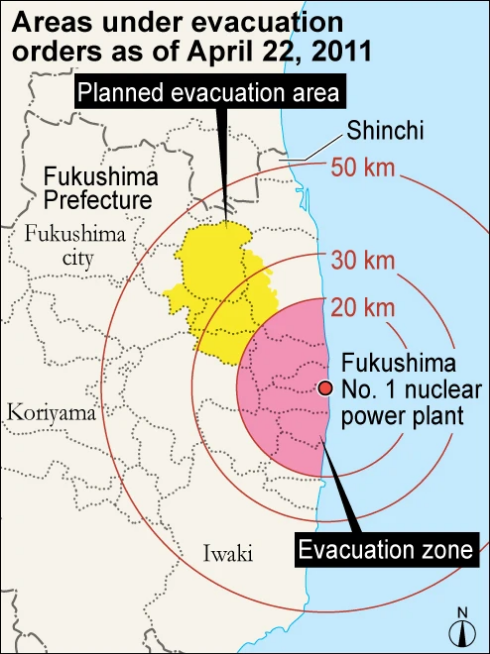
What is 2011 Tōhoku
Earthquake and Tsunami?
The 2011 Tōhoku earthquake and tsunami was a catastrophic event that struck Japan on March 11th. A powerful 9.0 magnitude earthquake off the coast of northeastern Japan triggered a massive tsunami that devastated coastal communities, causing widespread destruction, loss of life (over 18,000), and displacement. The disaster also resulted in a nuclear accident at the Fukushima Daiichi Nuclear Power Plant, leading to the release of radioactive materials and long-term environmental and health concerns. The event had a profound impact on Japan, prompting a reevaluation of disaster preparedness and the role of nuclear power.
The Fukushima Daiichi
Nuclear Plant Accident
The 2011 tsunami caused a severe nuclear accident at the Fukushima Daiichi Nuclear Power Plant. Flooding disabled the cooling systems, leading to meltdowns in three reactors and the release of radioactive materials. The incident was classified as a Level 7 event, the highest on the International Nuclear Event Scale. Over 150,000 residents were evacuated due to radiation risks. The accident sparked global debates on nuclear safety and prompted many countries to reevaluate their energy policies. Decommissioning the plant and cleaning up the area remain ongoing challenges, expected to take decades. The Fukushima disaster highlighted the risks of nuclear power in disaster-prone regions.
Story
Were the images we saw reported by the media that day the whole truth?
Why were we so helpless in the face of nuclear disaster?
Now, the hidden stories are coming to light.
Japan teetered on the edge of disaster on March 11, 2011, as the Great East Japan Earthquake triggered a catastrophic meltdown at Fukushima Daiichi. Overheated reactors, deprived of cooling, threatened a Chernobyl-scale catastrophe. Amidst the chaos, scientists struggled to find solutions, the government grappled with misinformation, and citizens were forced to flee their homes. The relentless ticking of the clock marked the progression of a crisis that seemed insurmountable. A series of hydrogen explosions, beginning with Unit 1 on March 12, pushed Japan closer to the abyss.



One event, different realities...
“Abandoning Fukushima power plant is unacceptable. That would threaten the very existence of this country.”
– Prime Minister Kan
“No, no. Venting has never been tried anywhere else before.”
– Chief of The Nuclear Safety
Commission of Japan
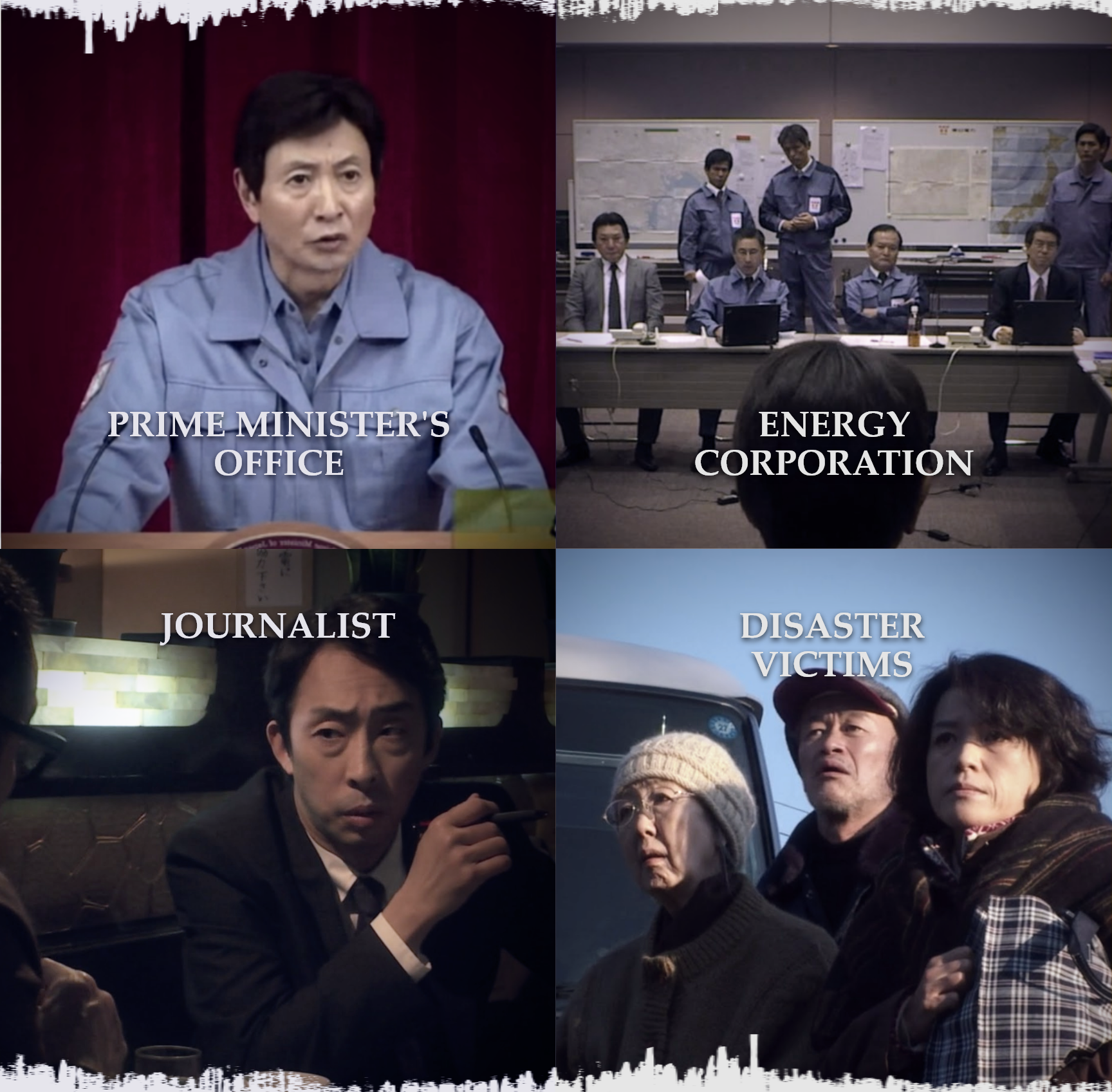
“Doesn’t ordering them to stay mean forcing them to work at the risk of their lives?”
– Journalist Nabeshima
“We were the only ones who weren’t told about this… Will we be able to return home…?”
– Fukushima Residents
Cast

as Journalist [Nabeshima]
In his relentless pursuit of the truth following the accident, Nabeshima loses contact with his wife. As he uncovers critical information, he struggles with the frustration of being unable to publish his findings.
Born in Tokyo in 1974, Kitamura is a versatile actor who has captivated audiences across theater, film, and television. From large-scale productions to independent films, he seamlessly adapts to diverse roles and genres. His distinctive presence and talent have earned him critical acclaim, including the Yomiuri Theater Grand Prize for Best Actor.
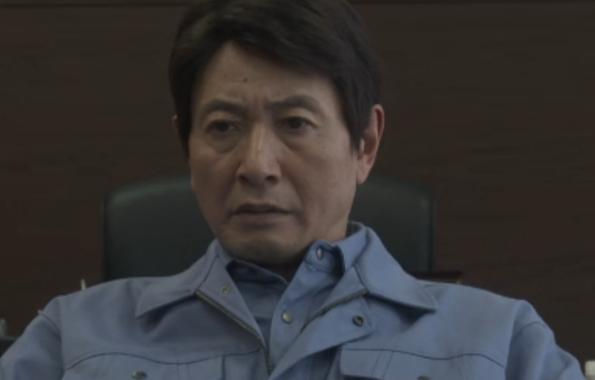
As Prime Minister [Naoto Kan]
As Prime Minister, he takes charge in the face of an unprecedented national crisis. Amid mounting challenges and critical decisions, he confronts unforeseen obstacles that test his leadership.
Born in Niigata in 1953, Mitamura is a veteran actor with a career spanning several decades. His breakout performances in the popular TV series Hissatsu Series and Taiyo ni Hoero! showcased his versatility and established him as a leading actor in Japan.
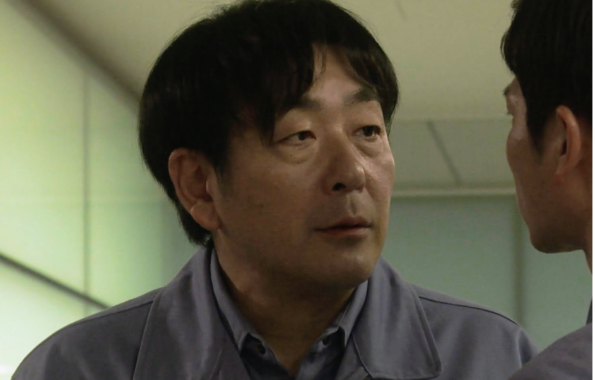
as Chief Cabinet Secretary [Yukio Edano]
As Chief Cabinet Secretary, he plays a crucial role in supporting the Prime Minister during the Great East Japan Earthquake and the Fukushima Daiichi nuclear disaster. Tasked with managing information and coordinating government efforts, he works under immense pressure in rapidly evolving circumstances.
Born on April 14, 1960, in Miyazaki Prefecture, Sugahara has appeared in numerous plays written and directed by Ryuji Mizutani, including the Hoshikuzu no Machi series (1994–2016). His notable film credits include Rinjo: The Movie (2012), WOOD JOB! (2014), and The Last Cop: The Movie (2015). He has also starred in acclaimed TV dramas such as Amachan (2013), Tokyo Scarlet (2014), and HEAT (2015). With a career spanning film, television, and theater, he is an indispensable actor known for his excellence in both serious dramas and comedies.

as Deputy Chief Cabinet Secretary [Tetsuro Fukuyama]
A versatile actor born in Fukushima, Kamio has built a successful career over several decades. Since his debut in 1997, he has appeared in numerous films, TV dramas, and stage productions. Notable works include Seiro no Umi and the popular TV series Seirei no Moribito.
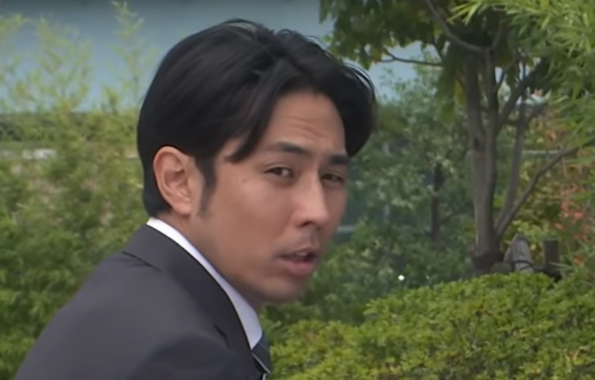
as Secretary to Deputy Chief Cabinet Secretary [Sakashita]
A seasoned actor, Hakamada has demonstrated his range across theater, film, and television. His ability to bring depth to his characters has made him a highly respected figure in the industry.

as Nabeshima’s wife [Manami]
Following the earthquake, Manami lost contact with her husband. Her anxiety deepens when a friend urges her to flee the country.
Nakamura gained widespread recognition for her role in the 2007 film Pacchigi! Love & Peace, earning multiple awards. Since then, she has starred in a variety of films and TV dramas, including Hayabusa, Golden Slaver, Hanako and Ann, and Kounodori.

as worker at Power Plant [Shuichi]
Shuichi works at the Fukushima Daiichi Nuclear Power Plant. Driven by a strong sense of duty, he returns to the site in the immediate aftermath of the accident…
Born on September 5, 1984, in Tokyo, Kaku made his acting debut in the drama Seija no Koshin (TBS) in 1998. He gained attention for his roles in All About Lily Chou-Chou (2001) and Hana and Alice (2004). His other notable film appearances include Your Favorite Song (2011), Family X (2011), HOME SICK (2013), South Wind (2014), and A Bride for Rip Van Winkle (2016).


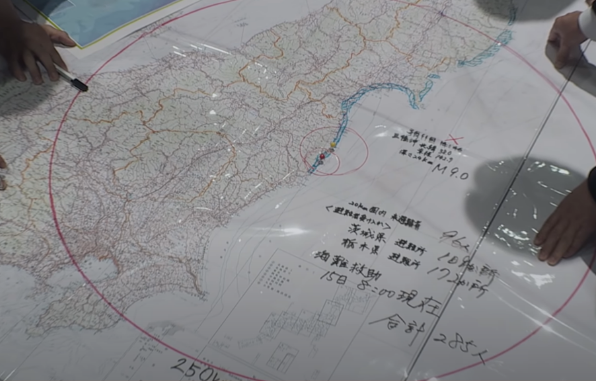
Reviews
Sets it apart from other films
This movie is different from other movies. It depicts the situation at the Prime Minister’s Office at the time, the confusion, and the information concealment by TEPCO. This movie is worth watching.
We all should watch this film before heading to the polls.
To ensure we never forget the major disaster that happened five years ago and to prevent it from happening again, I think it’s a good idea to watch this film before heading to the polls.
Powerful and enlightening film
This is a powerful and enlightening film that vividly captures the reality of how both the government and TEPCO misled the public by hiding the truth during a major nuclear crisis that shook the nation. A must-watch!!
Where can we go to live a normal life?
This country still carries the risk of potential destruction… ‘Where can we go to live a normal life?’ I want to quietly ask this question to the reactivated nuclear plants.
Staff
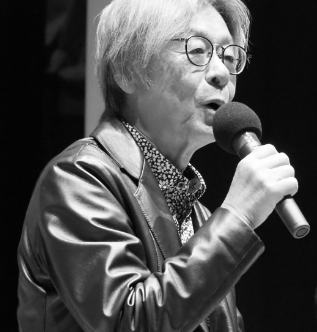
Executive Producer
Born in 1951 in Okayama Prefecture, he graduated from Waseda University (School of Science and Engineering). With a distinguished career that includes 12 years as an Okayama Prefectural Assembly member, he now serves as Chairman of Pole To Win Holdings, Inc. and is actively involved in Research Center for Natural Energy Policies.

Film Director
Films
Indian Summer (2005)
Gal Basara: Sengoku Jidai wa Kengai desu (2011)
hide 50th anniversary FILM JUNK STORY (2015)
TV Dramas
Ultraman Max (2005-2006, CBC/TBS)
Majisuka Gakuen (2010-2012, TV Tokyo)
Sabadol (2012, TV Tokyo)

Screenwriter
Born in Kobe, Hyogo Prefecture in 1962.
Hong Kong Paradise (1990) Director: Shusuke Kaneko
GTO (1999) Director: Masayuki Suzuki
Until Midnight (2001) Director: Makoto Wada
Osaka Pro-Wrestling Restaurant (2003) Director: Tommy Roe
A Cheerful Gang Turns the Globe (2006) Director: Tetsu Maeda
SarU Rock THE MOVIE (2010) Director: Tetsu Maeda
Crows EXPLODE (2014) Director: Toshiaki Toyoda

Musician
Born in Yokohama, Kanagawa Prefecture in 1951.
1968: Joined the Golden Cups, a popular rock band.
Produced hits such as Nagai Kami no Shoujo (A Girl with Long Hair).
1971: Enrolled at Berklee College of Music.
1974: Graduated from Berklee College of Music.
1976: Formed the band Gōdiego as the leader.
Hits: Produced hits such as Gandhara, Monkey Magic, Beautiful Name, and Galaxy Express 999.
2004: Participated in the film Swing Girls directed by Shinobu Yaguchi and won the Best Music Award at the 28th Japan Academy Prize.
Other works: Composed music for numerous films.
2016: Celebrated the 40th anniversary of Gōdiego and is scheduled to hold numerous concerts.

Producer
Born in Tokyo in 1968
2001: Departure Directed by Yosuke Nakagawa
Won the Best Screenplay Award at the Sundance Film Festival and was officially invited to the Berlin International Film Festival.
2005: Mahiru no Hoshizora Directed by Yosuke Nakagawa
Officially invited to the Berlin International Film Festival and won the Special Prize from the German Film Association.
2010: Shinchu Tenshi Directed by Naoki Ichio
2012: Little Maestra Directed by Toshiro Saiga
2014: Documentary Film Muchi no Chi Directed by Tomoya Ishida
Featuring Naoto Kan, Tetsuro Fukuyama, Haruki Madarame, and others.
Won the Encouragement Award from the Joint Committee for Peace Journalists.



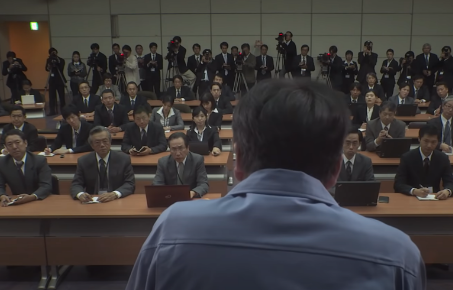
Movie Screening Project
Host a movie screening at your venue!
The “Seal of the Sun” Independent Screening Project is organized by ordinary citizens captivated by the film. The group aims to support and promote independent screenings of “The Seal of The Sun” not only across Japan but also overseas. We lend out DVDs and Blu-rays for independent screenings to those who wish to host screenings in local community events, schools, and other venues. For more details, Please contact us using the Contact Us form.
We’ll Visit Your Venue for Interviews and Discussions!
Motivated by our mission to ensure everyone knows about the important messages in our film, our team—including producer Tamiyoshi Tachibana—is willing to visit movie screening venues around the world. So far, we’ve already visited over 30 venues across 9 countries! We are eager to participate in discussions, interviews, and Q&A sessions to engage with your audience and share insights about the film. Let us know how we can support your event!
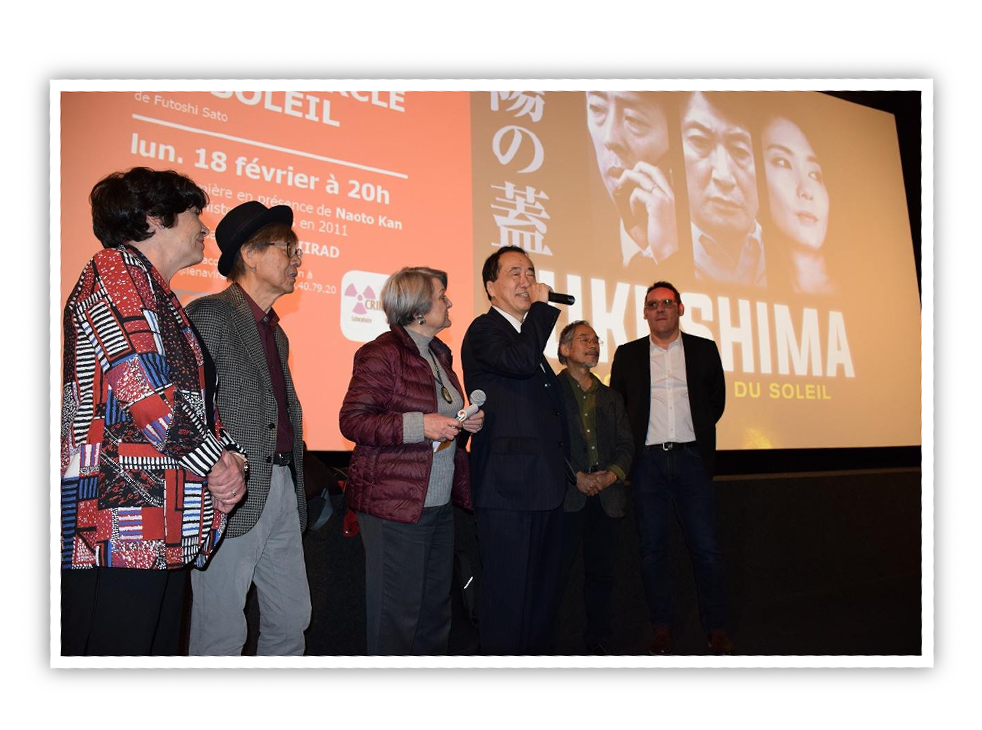
【Standard Version】
The Seal of the Sun: 130-minute version
The Seal of the Sun: 90-minute version
【Barrier-Free Version】
The Seal of the Sun: Barrier-Free Subtitled Version (130 minutes/90 minutes)
The Seal of the Sun: Audio Guide Version (130 minutes)
The Seal of the Sun: Barrier-Free Subtitled Audio Guide Version (130 minutes)
【Multilingual Version】
The Seal of the Sun: English Version (130 minutes)
The Seal of the Sun: Polish Version (130 minutes)
The Seal of the Sun: German Version (130 minutes)
The Seal of the Sun: Chinese Version (130 minutes)
The Seal of the Sun: Korean Version (130 minutes)
The Seal of the Sun: French Version (130 minutes/90 minutes)


![[36th Session] Musashino Political Academy](https://thesealofthesun-fukushima.film/cms/wp-content/uploads/2025/06/9f969c95cf125fac0317e91e087bae6c-1.png)




